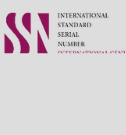Molecular epidemiology, antimicrobial resistance pattern and virulence profile of bacterial strains isolated from neonatal sepsis.
Abstract
Sepsis in newborns is linked to increased death and morbidity rates in both developed and underdeveloped countries. Epidemiological data on neonatal sepsis is limited due to many hurdles in sample collection and processing from newborns. In Canada, there are roughly 360,900 births annually, and there are 1-2 cases of early-onset neonatal sepsis for every 1,000 live births. For every 1000 live births in the US, there are 0.3-2 cases of early-onset sepsis that can be confirmed by culture. Neonatal sepsis was predicted to occur in China at a rate of 25.6 per 1000 live births, based on birth population-based surveys from one region that roughly matched national average values. With 2202 occurrences of neonatal sepsis per 100,000 live births worldwide, India has the highest incidence of clinical sepsis. The incidence of neonatal sepsis is reported to be between 5%-70% in major hospitals of Pakistan. The common bacterial species isolated from neonatal sepsis were E. coli, Klebsiella. Pneumonia, Acinetobacter baumannii, Staphylococcus aureus, Staphylococcus epidermidis, S. Haemolyticus and Pseudomonas aeruginosa. The strains of bacteria isolated from confirmed cases of neonatal sepsis harbored various types of virulence factors that significantly assisted in the spread of infection at greater speed and magnitude.
Downloads
Downloads
Published
Issue
Section
Categories
License
Copyright (c) 2024 Chronicles of Biomedical Sciences

This work is licensed under a Creative Commons Attribution-NonCommercial 4.0 International License.




